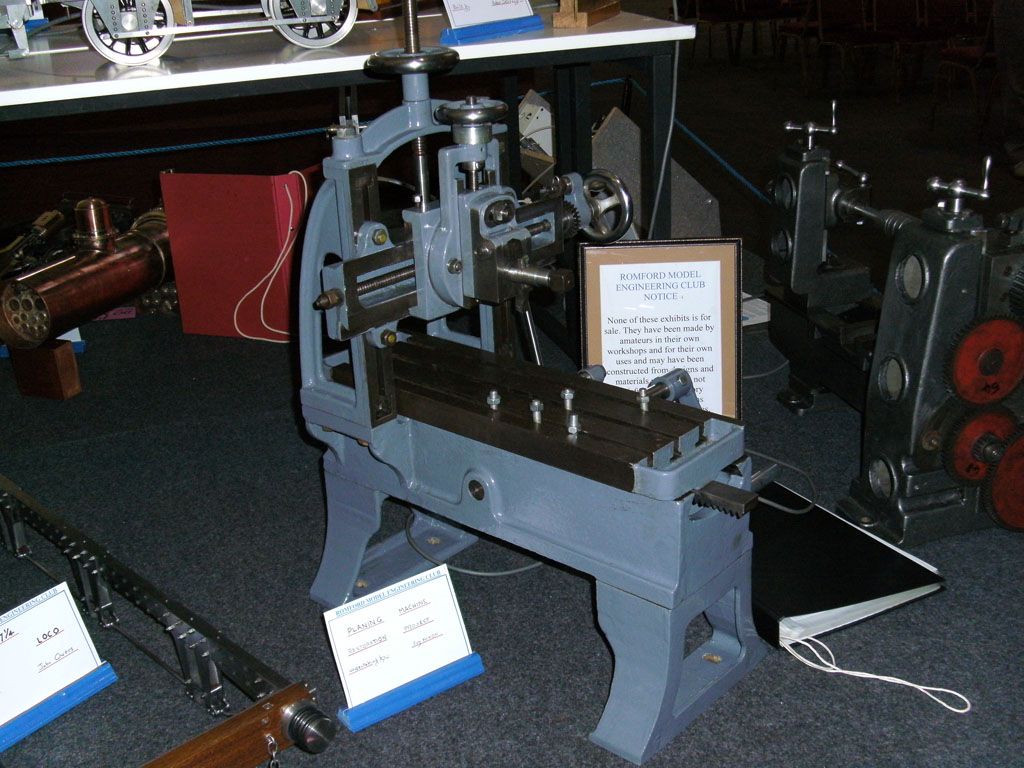I have always wanted to get my ‘hooks’ on a machine which would allow me to machine really flat surfaces. I designed a small knee-less horizontal milling machine which was to be fabricated from structural steel and would use SKF (usual disclaimer) linear slides. My local suppliers have minimum order rules which for the products I wanted. I would have had to buy 10 pairs of each size and length of rail and 20 pairs of each of the corresponding bearings. These would have cost a king’s ransom so that idea was binned. I have a rule never to publish anything I have not made and know works, so I kept very quiet about the thing.
That is how things stayed until I found an article on the web entitled ‘A Small Shaping Machine by Mr E.H. Knight. It was published in the Model Engineer 5th October 1952. It was totally fabricated without welding or brazing. This article can be found here.
I looked at the article and thought ‘this is a dead ringer’ for the epoxy concrete technique used by John McNamara the thread on this website called New Technology in the Model Engineers workshop
The original specification by Mr E.H. Knight is as follows
Table size 4 ¾” (120.65mm) by 4 ¼” (107.95mm)
Stroke 3” (76.2mm)
Cross feed 4” (101.6mm)
Tool down feed movement ½” (12.7mm)
Unfortunately he gives no direct indication of the maximum daylight that is from the bottom of the ram to the top of the base plate. From Mr. Knight’s drawings looks to be around 2” (50.8mm)
All of Mr Knight’s slide ways are 60/30° mitres with no gib-strips.
I think that the dimensions given are too small for my use. I want to build small ICs as I can get the full-ish kit of materials from the U.K.
My specification would be
Table size 8 ¾” (222.25mm) by 8” (203.2mm)
Stroke 6” (152.0mm)
Cross feed 6” (152.0mm) as measured from the centre of the ram
Daylight 6” (152.0mm)
Tool down feed movement minimum 2” (50.8mm)
Since I am scaling Mr. Knight’s sized up by a half I am going to increase the thickness by 1.5 times. So a ¼” will become 3/8” and using John McNamara figures from his contribution in “New technology in Model Engineers Workshop” I will thicken the material by a factor of 4 where needed. This will be in the base thickness, the cross traverse and the ram carrier will be cast in epoxy concrete. The ram and clapper box assemblies will be in steel as will the top of the base plate.
I want to power the machine as I have no liking to pull the ‘punishment leaver’ for several hours. I have a 1/8HP Squirrel Cage motor and would not like to take more than 40-60 thou (1-1.5mm) cuts. Mr Knight’s machine has no automatic cross feed, mine will have. This will be a ratchet wheel which turns the cross feed screw through a key-way. The feed pawl will be at the rear of the ram and will engage the ratchet on the return stroke. Its position on the ram will determine the amount of feed.
The slide-ways, I have an idea about them which I will reveal later once I have sorted out a material.
I would love to hear comments and helpful advice.
 JasonB.
JasonB.





